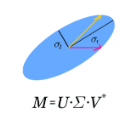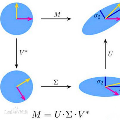We study the efficient numerical solution of linear inverse problems with operator valued data which arise, e.g., in seismic exploration, inverse scattering, or tomographic imaging. The high-dimensionality of the data space implies extremely high computational cost already for the evaluation of the forward operator which makes a numerical solution of the inverse problem, e.g., by iterative regularization methods, practically infeasible. To overcome this obstacle, we take advantage of the underlying tensor product structure of the problem and propose a strategy for constructing low-dimensional certified reduced order models of quasi-optimal rank for the forward operator which can be computed much more efficiently than the truncated singular value decomposition. A complete analysis of the proposed model reduction approach is given in a functional analytic setting and the efficient numerical construction of the reduced order models as well as of their application for the numerical solution of the inverse problem is discussed. In summary, the setup of a low-rank approximation can be achieved in an offline stage at essentially the same cost as a single evaluation of the forward operator, while the actual solution of the inverse problem in the online phase can be done with extremely high efficiency. The theoretical results are illustrated by application to a typical model problem in fluorescence optical tomography.
翻译:数据空间的高度意味着对前方操作员的评价计算成本已经极高,使得对反向问题的量化解决办法,例如,通过迭代规范化方法,几乎是行不通的。为克服这一障碍,我们利用问题背后的微粒产品结构,并提出一项战略,为前方操作员建立低维经认证的准最佳级低级订单模型,该模型的计算效率可大大高于截流单值分解法。在功能分析环境中对拟议的减少模式方法进行了全面分析,并讨论了减少的订单模型及其用于反向问题数字解决办法的高效数字构建。总而言之,在离线阶段安装低级近似值,其成本基本上与前方操作员的单一评估相同,同时,对在线模型应用的反向问题的实际解决办法,可以以极高的理论效率加以说明。





